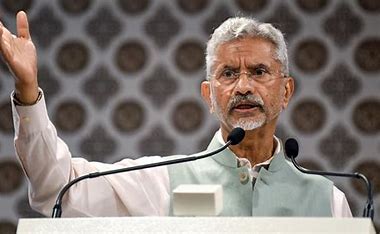
Even after 11 rounds of talks between the protesting farmers and the government, the great divide remains. The farm leaders continue to take the maximalist position of seeking the repeal of the three Central farm laws, even when the Union Agriculture Minister talks about discussing the laws clause by clause. Both sides have taken rigid positions from where any early and easy resolution doesn’t seem forthcoming. While the government has made it abundantly clear that it is ready to discuss everything except the repeal of the three laws, the farm leaders won’t be accepting anything but the abrogation of the three Central legislations. And as the leaders, both political as well as farm, fail to find a middle ground, it’s the common farmers, hailing mostly from Punjab, Haryana and western Uttar Pradesh, who have been forced to stay in their makeshift tents at Delhi’s borders since 26 November.
Analysed closely, the situation is a classic case of how not to handle an issue. The government failed to comprehend the concerns among a section of farmers, especially from Punjab, regarding the three farm bills passed by the Central government in September 2020. Farmers were uneasy about talks of MSP and mandis being terminated. The farmers’ agitation actually gained momentum on these two points. Today the government is ready to give in writing that it is not going to end the MSP and mandis. But the question is: Why did it fail to reach out to farmers when these issues were first raised and the protests were confined to Punjab alone? Why did Central government ministers not reach out to them then?
The farmers’ stir could have been handled much better had the government dealt with it initially—and with empathy. The government seemed to have been misled by bureaucratic advice of letting the agitation lose steam on its own, and failed to act on time. And by the time it woke up to the gravity of the situation, the agitators were already on the borders of Delhi and the agitation had become much more than the issues of MSP and mandis. Whether one agrees or not, the fact is the farmers’ protests have acquired a certain political colour today. It has also become a prestige battle where no one wants to be seen to be conceding. This explains why even after the government’s repeated assurances that the MSP and mandis won’t go away, and also its readiness to discuss the three farm laws clause by clause, there is no movement in the talks. The farm union leaders’ “my way or highway” stand won’t be beneficial for the farmers’ cause.
What’s ironical, amid the ongoing protests, is that the track record of the Modi government on MSP isn’t bad at all. In fact, on the issue, the Modi government has done much more than the previous dispensation. MSP payment to farmers for paddy rose by 2.4 times to Rs 4.95 lakh crore between 2014 and 2019 under the Modi government, as against only Rs 2.06 lakh crore under the previous Congress-led regime between 2009-2014. MSP to farmers for wheat increased by 1.77 times during 2014-19 to Rs 2.97 lakh crore, as compared to Rs 1.68 lakh crore in the 2009-14 period. Also, MSP payment for pulses rose by 75 times under the Modi dispensation, to reach Rs 49,000 crore, in sharp contrast to Rs 645 crore under the UPA-II.
To its credit, the Modi government, in July 2018, announced MSP at 1.5 times the cost of production for 14 kharif crops. This was based on the recommendations of the Swaminathan Commission and National Commission of Farmers, 2006, which the previous dispensation failed to implement despite being in power till 2014. Here, one needs to clarify that the role of MSP in Indian agriculture is overhyped. It, after all, relates to just over 6% of farmers, with an overwhelming majority of small farmers not going to the mandi to sell their produce.
The current stalemate is tragic in the sense that the issues involved are serious for our agriculture and its future. Over exploration of groundwater table, consequent need to change cropping pattern, glut of procured wheat and paddy and related storage capacity and lower market price than the MSP are the core issues defying serious discussion due to the vested interest of the farmers in the MSP and mandis and the government’s failure to anticipate it. Any compromise, which seems probable, will only prolong the wait for the agricultural reforms. The government will have to find better ways to deal with the farmers and their concerns, perhaps in piecemeal.
The Modi government has failed on two fronts: One, it didn’t reach out to farmers when they first raised their concerns. But even more important than that, it should have engaged farmers and their leaders while formulating the three laws. What the Agriculture Minister proposes to do now—to discuss the farm laws threadbare, clause by clause—he and his team could have done before September.
The Centre’s second failure is even more significant: the battle of perception. It’s something this dispensation should look at more seriously. Despite doing reasonably good work for the farmers, the government still struggles to shrug off its pro-trader image. The government is often seen wanting in putting the facts across. It sometimes gives the impression that it doesn’t care; at other times, it is seen as being helpless. The government needs to beef up its defences in dealing with perception wars and need for a wider consultation on such measures.
Be that as it may, first the CAA stir and now the farm protests give the government enough reason to look inwards and see where it has gone wrong. Both the measures were desirable and well-intended, yet faced resistance due to a lack of sufficient communication on the purpose. It seems to be a complex function of the government’s overconfidence and absence of a responsible opposition at the Centre to keep the government on toes. The country can’t afford endless protests and agitations, especially when the economy is badly hit by the Covid-19 pandemic and the consequent lockdown.
The writer is a former IPS officer and the editor of the quarterly magazine, ‘Dialogue’. The views expressed are personal.
The farmers’ stir could have been handled much better had the government dealt with it initially—and with empathy. The government seemed to have been misled by bureaucratic advice of letting the agitation lose steam on its own, and failed to act on time. And by the time it woke up to the gravity of the situation, the agitators were already on the borders of Delhi and the agitation had become much more than the issues of MSP and mandis.















